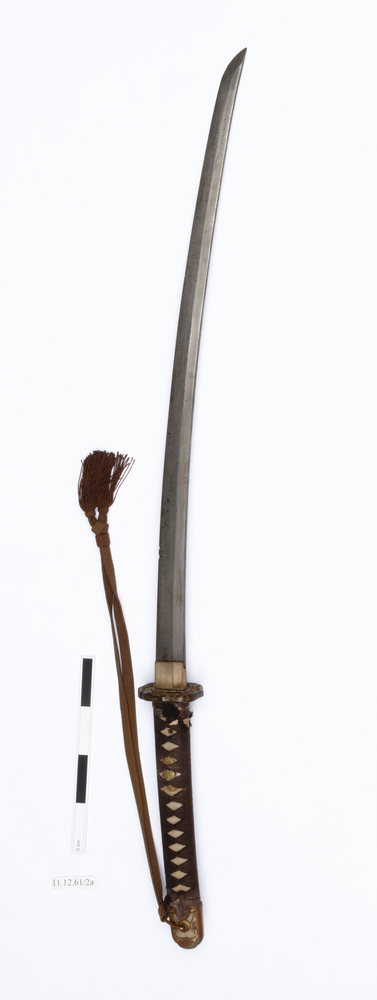Loans are a vital part of the museum network, allowing objects to be transported and displayed in different places. Following strict conditions and protocols, objects can be moved from one museum to another so that their stories can reach different audiences. But other museums and heritage sites are not the only places that objects can be loaned to.
As a UCL placement student working with the Horniman’s archive at the Study Collections Centre, I have been cataloguing archival files relating to historic loans at the Horniman.
Under the supervision of the fabulous Collections and Loans Coordinator, Natasha Logan, and brilliant Archivist, Lizzie Hensman, I have been working through boxes of mysterious files. Each box contains historical documentation from loans in and out of the Horniman between 1950 and 2000.
During my ‘file-diving’, I have uncovered some surprising and unexpected places and people to whom the Horniman has loaned objects in the past.
Loaning to libraries
The first, and perhaps most wholesome example of a loan to a non-museum institution took place across the 1960s and 1970s.
The Horniman loaned objects to several public libraries in the London Borough of Lambeth, for their annual ‘Children’s Book Festival’. Each library would put on a small, temporary exhibition on a topic, alongside other public engagement activities like talks by subject specialists and painting and poetry competitions.
In 1968, the Horniman loaned a number of taxidermy animals to Durning Library for their exhibition on ‘Mammals’. These included a duckbilled platypus, a pangolin, an armadillo and a sloth.
In 1970, six musical instruments were loaned to Jeffreys Library for their exhibition on ‘Rhythm and Music’.
Much to my surprise, in 1967 the Horniman loaned a mummified falcon and coffin lid for mummified remains for their exhibition on ‘Age of the Pharaohs’ to Tate Library. One of the key things I learnt from this project is that what was acceptable to be loaned just a few generations ago has changed significantly alongside developments in the museum sector in the past fifty years.
Current Collections and Loans Coordinator Natasha had to sit down and have a cup of tea after being told the Horniman once loaned a Japanese sword to a Children’s Book Festival exhibition in 1970.

sword (weapons: edged)
Anthropology
TV appearances
Another surprising group that the Horniman made several loans to in the same period was television companies. Still loaning with the purpose of education, the Horniman lent objects to TV broadcasting companies including Grenada TV, ATV Limited and ILEA (Inner London Education Authority) Educational Television Service, to feature on their educational programmes.
An eclectic mix of objects from various parts of the Horniman collection were loaned including:
- a candle snuffer
- an Egyptian reed basket
- a brass cannon
- a Tibetan prayer wheel
- a coconut shell ring
- and an egg timer.
The Horniman doesn’t lend objects for commercial use anymore, which rules out loaning objects to television companies. However, in the 1960s and 1970s there was no access to museum objects other than physically going to the museum.
Therefore, showing Horniman objects and telling their stories on television programmes was a way that the Museum could reach much wider audiences and educate those who could not visit the Museum itself. In the present, anyone can now access the Horniman’s collection by going to the Horniman’s online records through the website.
The Central Office of Information
The final loan I want to share is quite a remarkable one. On various occasions in the 1960s, the Horniman loaned to the Central Office of Information. This was the UK government’s marketing and communications agency that operated between 1946 and 2011.
One file I catalogued contained detailed correspondence relating to the loan of a Harp Ventura, which was to be displayed at the ‘Expo 67 International and Universal Exhibition’ held in Montreal, Canada.
This international world fair featured 90 pavilions representing ‘Man and his World’ and was designed to showcase the achievements of nations of the world.
Participating countries usually built their own pavilions, giving a competitive edge to the event. The British Pavilion, planned and designed by the Central Office of Information, featured the Horniman’s Harp Ventura.
The Harp Ventura was a harp-guitar hybrid invented by Angelo Bendetto Ventura (c. 1781-1856). They have between 17 and 19 strings, measuring 83 x 33 x 13cm and are beautifully decorated.

This particular Harp Ventura is still in the Horniman’s collection (currently in storage). An inscription on the body of the Harp reads ‘Harp Ventura. Invented by A.B. Ventura, Teacher to Her Late Royal Highness, the Princess Charlotte of Wales’.
The loan file also contained official British government photographs of the Pavilion. Of the dozens of files I have looked at as part of this project, this loan was the furthest a Horniman object has travelled for a loan (3,250 miles)!

Cataloguing the mystery loan files has been a fantastic experience. You never quite know what you’re going to get as you open the next file. Some are less interesting than others (there were a lot of insurance documents…) but the mystery ‘what’s in the box’ element has made this project a thoroughly enjoyable one.
Additionally, it has been extremely useful in providing insights into the history of the Horniman’s collection objects, enabling us to share the stories of objects with greater knowledge and depth. There is a lot that can be learnt from unexpected places!
Now, onto the next file …


